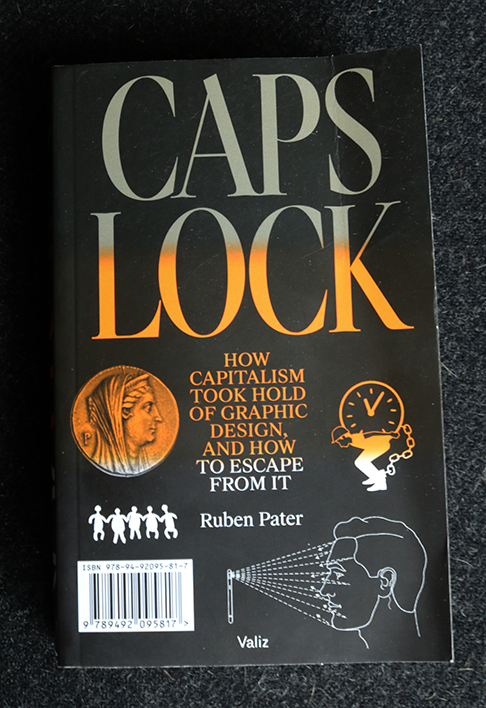David Stairs

Thomas Carlyle called economics the “dismal science” in response to Malthus’s writings about exponential population growth. Carlyle was a Victorian and did not live in an era dominated by design. It would’ve been interesting to see what he would have made of our times. Frantic? Overwrought? Or maybe just predictable?
When perusing design writing these days, it seems to me to fall into two main categories: grim, and grimmer. The first category is the commercial, or trade design press. This includes the big coffee table publishers, like Phaidon, Taschen, and Rizzoli, that like to sell 500-1000 versions books (you know, Chair: 500 Designs That Matter, or Patented: 1000 Design Patents, etc.), as well as mainstream design periodical and blog writers (FastCo, Wired, etc.). The second category is the academic design press, publishers like MIT, Bloomsbury, or Princeton Architectural, together with academic journals like Design Issues, or Dialectic. The former of these categories is out to make money plain and simple, so their titles tend toward the popular and the pretty. The latter, with fetching article titles like “Examining the Influence of Positionality on the Facilitation of Design Processes,” is full of articles with lots of footnotes and cross-disciplinary concepts, and caters to academics needing to publish for tenure hence, is a bit more turgid.

In 2020, I had the honor to be included in the Bloomsbury anthology, Ethics in Design and Communication, edited by Laura Sherling and Andrew De Rosa. My point of view on the environment has only darkened with the passage of years. Using the writings of anarcho-environmentalist philosopher John Zerzan as a jumping off point, “Designing Ourselves to Death” is my dystopic analysis of where we now find ourselves, and how design helped get us here.
I’m primarily skeptical of the way the design establishment, and design writing in particular, has been willing to give design and technology a pass when it comes to environmental degradation. We talk about design’s role in technological innovation, but the cupidity of the profession when it comes to admitting the limits of AI, or design’s complicity in advancing civilization through techno-capitalism has always struck me as hypocritical, if not suicidal.
The reasons why design, which could be convention-breaking, instead breaks conservative are obvious, if not frequently discussed: design’s complicity with capital. Enter Ruben Pater, self-styled designer-journalist. Since 2016 Pater has made a mini-career writing about design’s absorption by capitalism, first in The Politics of Design, and more recently in CAPS LOCK. In the latter Pater begins his discussion with an examination of the origins of our market system, and how artists have been involved in it, whether it be in the sculpting of coinage, or the design of currency and stock certificates.

He then launches a 500-page assault on capitalism, the economic movement outlined by Adam Smith, Malthus’s 18th century contemporary, amply illustrating it with stock imagery and familiar examples. The books’ arrival has caused a mild tsunami among designers. This would be less funny if we we’re talking about anything other than a profession that has studiously avoided a substantive critique of capitalism until now, thereby rewarding Pater’s efforts with bloated praise.
CAPS LOCK has been assiduously researched, with over 150 entries in its biblio, and one wishes it had been as ably proofread. Editing complaints aside, it rises to its best level in its discussion of precarity as it relates to the information economy, providing six examples of design practitioners attempting to shift the paradigm. This may seem a bit much for a book that purports to abridge not only the history of capitalism, but the history of advertising and of work in general. And yet, not achieving all one’s goals when one aims high is not the worst failing. Pater is attempting to find alternatives to commercialization and finds them in the community engagement of studios like Brave New Alps.
CAPS LOCK is a bit of a slog, but not nearly as dreary as Alistair Faud-Luke’s design activism, which is too bad for a much needed look at sustainability. Although Faud-Luke provides three dozen sample activist organizations in his appendices, half of them are no longer in existence. This may be because the book was published in 2009, not 2021 like Pater’s, and things tend to change rather quickly in the world of social design. design activism is competently designed however, which is not always a major consideration of such works, although Faud-Luke’s tendency to load it up with design diagrams is far from an aid to smooth reading. One is almost forced to “regard” it rather than read it.
design activism, like CAPS LOCK, is hampered by its earnestness, a quality which infects much design writing today. The trouble, of course, is that nothing is more tedious than proseyltism, unless it is the tiresome kludge of trying to balance keeping up with today’s trends against nostalgia-farming the past, as AIGA’s Eye on Design is fond of doing. I mean, capitalism is the refuge of dictators and crooks: Extraction obsessed creeps like Jair Bolsonaro or stock buy-back corporate raiders like Jack Welch. What’s so hard to just straight-on critique it?
Which returns me to my original hypothesis on design writing: careful, industry and tenure groping, compiling research from other disciplines, for the most part boring as hell. Design publishing: unoriginal, wary of change, and inclined toward prettifying convention, no matter how much they allude to “new tech.” So that even those writers who are attempting to rock the boat, like Pater and Faud-Luke, over-anthologize without overachieving. It’s a sad state for a profession that considers itself both “visionary” and “creative.”
But then, self-congratulation is a common bias among professionals, one they’d be better off leaving at the backdoor with their wet soggy galoshes, and other intellectual pretensions.
David Stairs is the founding editor of the Design-Altruism-Project.










